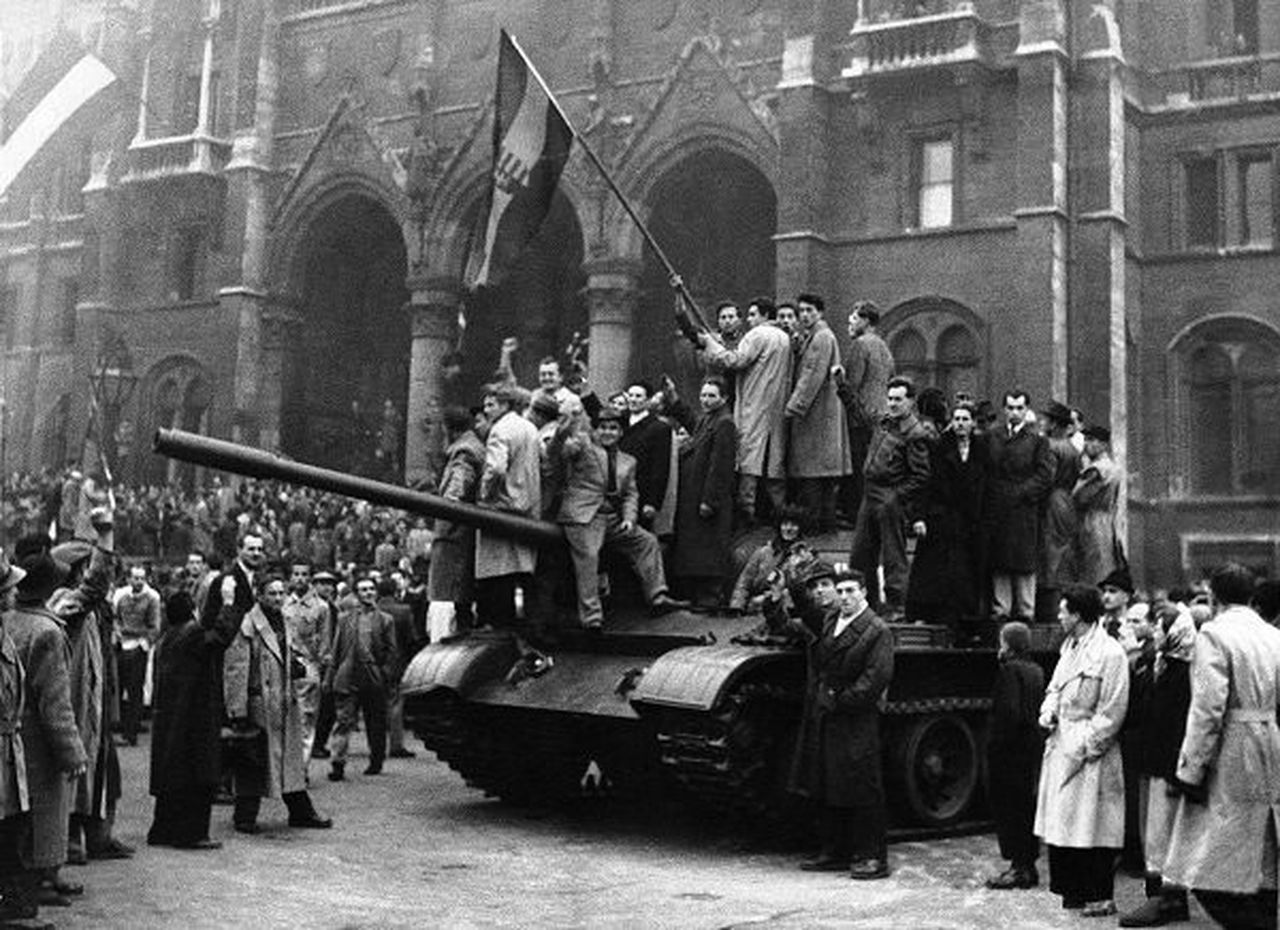- cross-posted to:
- workingclasscalendar
stahmaxffcqankienulh.supabase.co
- cross-posted to:
- workingclasscalendar
Hungarian Revolution (1956)
Tue Oct 23, 1956

Image: **
On this day in 1956, a rebellion broke out in Budapest against the Soviet-aligned Hungarian People’s Republic. The uprising was the first major threat to Soviet control since the Red Army drove Nazi Germany from its territory at the End of World War II in Europe.
The revolt began as a student protest, which attracted thousands as they marched through central Budapest to the Hungarian Parliament building. Protesters were fired upon from within the building by the State Security Police, killing multiple students.
As news of the violence spread, disorder and violence erupted throughout the capital, including the lynching of communist organizers and release and arming of anti-communist political prisoners.
As the rebellion grew, the government quickly collapsed. Thousands of people organized militias, battling state police and Soviet troops. Insurgents took control of workers’ councils from the ruling Hungarian Working People’s Party and demanded political reforms.
On November 4th, a large Soviet force invaded Budapest and other regions of the country. The Soviet government justified the suppression by taking the position that the uprising was fascist in character, although this claim has been disputed by historians such as Peter Fryer, author of “Hungarian Tragedy” and eyewitness to the uprising.
Over 2,500 Hungarians and 700 Soviet troops were killed in the conflict, and 200,000 Hungarians fled as refugees. Mass arrests and denunciations continued for months thereafter, and suppression of the revolution continued for decades afterward.
These Soviet actions, while strengthening control over the Eastern Bloc, alienated many Western Marxists, leading to splits and/or considerable losses of membership for communist parties in capitalist states.
Imre Nagy, a communist political leader during the crisis who embraced some of the insurgent’s proposed reforms, was secretly captured, convicted of organizing the overthrow of the Hungarian People’s Republic, and executed.
In 1989, Nagy was politically rehabilitated and re-buried. Approximately 200,000 people attended the ceremony, one of the events that marked an end to communism in Hungary. At the inauguration of the Third Hungarian Republic in 1989, October 23rd was declared a national holiday.
The uprising is celebrated by right-wing forces today; in 2006, President Bush sent George Pataki, the governor of New York, to Budapest to commemorate the 50th Anniversary of the Hungarian Revolution.
- Date: 1956-10-23
- Learn More: libcom.org, www.marxist.com, en.wikipedia.org, www.marxists.org, georgewbush-whitehouse.archives.gov.
- Tags: #Communism, #Marxism, #Protests.
- Source: www.apeoplescalendar.org

